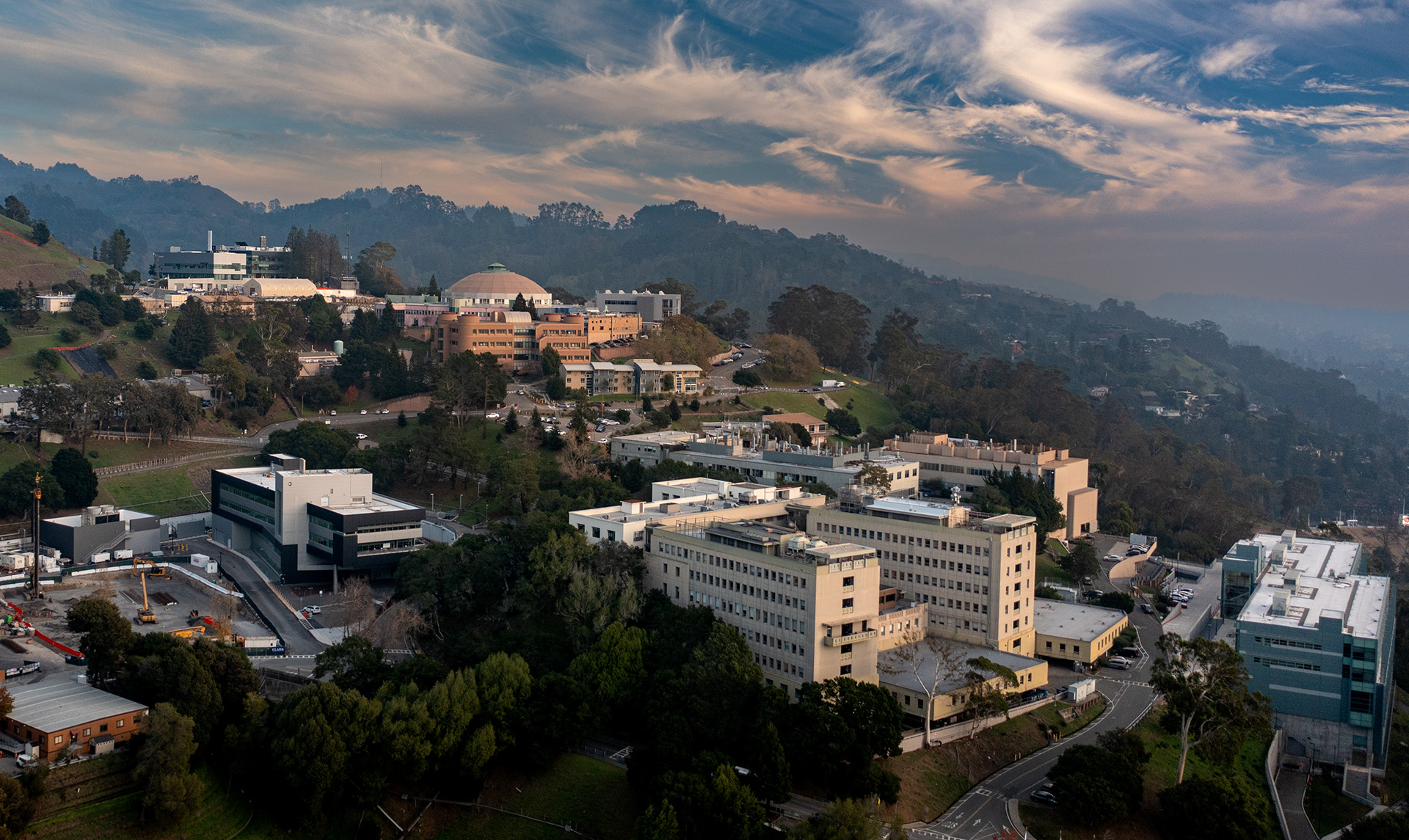Funding provided by the Inflation Reduction Act (IRA) is accelerating the development of several critical facilities and projects at the Department of Energy’s (DOE) Lawrence Berkeley National Laboratory (Berkeley Lab). These projects, which support research spanning disciplines ranging from biology and physics to nanoscience and supercomputing, will improve Berkeley Lab’s ability to find solutions for science, people, and the planet.
“America’s commitment to science and ingenuity shaped us into the world leaders we are today, and the continued success of our national laboratories will ensure we’re at the global forefront of innovation for generations to come,” said U.S. Secretary of Energy Jennifer M. Granholm. “Thanks to President Biden’s Inflation Reduction Act, these world-class institutions will receive $1.5 billion—one of the largest ever investments in national laboratory infrastructure—to develop advanced energy and manufacturing technologies we need to advance the frontiers of science and tackle tomorrow’s challenges.”
A DOE event announcing IRA funding is available at www.energy.gov/live today at 2pm CT.
“Accelerating the construction of new scientific facilities and equipment will enable our world-class experts to develop science solutions today and for decades to come, and continue to train the next generation of scientists,” said Berkeley Lab director Mike Witherell.
In all, Berkeley Lab will receive at least $200 million in Inflation Reduction Act funding. Below are some of the projects and facilities that will deliver results faster, and at a greater scope, due to this investment.
Science Laboratory Infrastructure Projects
BioEPIC: The Biological and Environmental Program Integration Center (BioEPIC) is a new facility under construction at Berkeley Lab, which seeks to revolutionize our understanding of how microbes interact with soils and plants to influence the environment. IRA funding will help complete the project more efficiently and support more researchers pursuing a wider range of work, including mitigating the effects of climate change through soil carbon sequestration.
Seismic Safety Modernization: This project provides enormous benefits to the seismic safety of Berkeley Lab staff and visitors by addressing the highest priority seismic risks and replacing the 70 year old cafeteria complex. The new facility will provide broader opportunities for science collaboration with modern conference and meeting space, allowing the Laboratory to host scientific workshops and enhance the impact of DOE research across our nation. IRA funding will ensure this project advances quickly, meeting its budget and timeline goals.
The Science Laboratories Infrastructure program supports scientific and technological innovation at the Office of Science laboratories by funding and sustaining mission-ready infrastructure and fostering safe and environmentally responsible operations.
Cutting Edge Physics Projects
Cosmic Microwave Background – Stage 4 (CMB-S4): CMB-S4 is the next-generation ground-based cosmic microwave background experiment, which will provide a dramatic leap forward in our understanding of the fundamental nature of space and time and the evolution of the universe. IRA funding provides important support to the project to advance the conceptual design phase and to continue development of key technologies needed to achieve the ambitious goals of this experiment.
Gamma Ray Energy Tracking Array (GRETA): GRETA, a new high-resolution gamma-ray detector system that will be used at the Facility for Rare Isotope Beams (FRIB), will enable cutting-edge research with rare isotopes for FRIB’s international community. IRA funding enables the procurement of three more detector modules, advancing the project schedule, and reducing risk related to supply chain delays.
CUORE Upgrade with Particle Identification (CUPID): CUPID is a neutrinoless-double beta decay detector that will provide new insight about the nature of matter and how stars create elements. IRA funding will enable R&D and other efforts by the US members of this international collaboration to move towards completion of the project definition and conceptual design phase (CD-1).
National Energy Research Scientific Computing Center (NERSC)
The National Energy Research Scientific Computing Center (NERSC) is currently deploying Perlmutter, a high performance computing system. The Perlmutter system will play a key role in advancing scientific research in the U.S. across the DOE Office of Science mission. Perlmutter is the first NERSC system designed for modeling and simulation, large-scale data analysis, and AI for science. The IRA funds allow NERSC to reduce financing costs by enabling the outright purchase of the Phase-2 Perlmutter system.
Advanced Light Source Upgrade (ALS-U)
The ALS-U project will transform the ALS into the world’s highest coherent flux source of soft x-rays, ensuring its continuing scientific leadership for decades to come. IRA funds will benefit the project in several ways, including accelerating large procurements, which will reduce schedule risk and the impacts of inflation. When completed, the project will be used to provide insights vital to advancing DOE priorities, from energy storage and alternative fuels to quantum information and microelectronics. More than 1,600 scientific users from around the world benefit from the ALS’s capabilities each year.
Molecular Foundry
IRA funds will be used to accelerate the delivery of multimodal optoelectronic scanning transmission electron microscopy capabilities at the Molecular Foundry. This world-unique instrument will combine state-of-the-art analytical capabilities with the center’s expertise in atomic resolution tomography and nanoscale optoelectronic characterization to enable the study of complex energy conversion and transfer processes.
###
Founded in 1931 on the belief that the biggest scientific challenges are best addressed by teams, Lawrence Berkeley National Laboratory and its scientists have been recognized with 16 Nobel Prizes. Today, Berkeley Lab researchers develop sustainable energy and environmental solutions, create useful new materials, advance the frontiers of computing, and probe the mysteries of life, matter, and the universe. Scientists from around the world rely on the Lab’s facilities for their own discovery science. Berkeley Lab is a multiprogram national laboratory, managed by the University of California for the U.S. Department of Energy’s Office of Science.
DOE’s Office of Science is the single largest supporter of basic research in the physical sciences in the United States, and is working to address some of the most pressing challenges of our time. For more information, please visit energy.gov/science.
